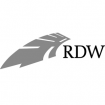We help you on your way to a valuable organization
Whether it concerns employee training, implementation, advice or e-learning. The Naristas make it easy for you to get more value out of GRC.


Implementation, Advice, Training

NARIS not only supplies the software, but also guides the implementation of risk-based performance in the organization. The implementation of new software in your organization requires great care and attention. Based on 3 carefully elaborated steps, our approach has proven itself in more than 200 organizations.
NARIS Risk Academy specializes in risk management, compliance and audit training. Training at the Academy is characterized by its practical focus. Our teachers have years of practical experience and are real experts in the field. Central to our training are the words inspiration, hands on, adventure and reliable.

Let's talk
Do you have questions about our services for your organization? Feel free to contact us
Fill out the form or
call Floor:

Contact us without obligation
Would you like to know what we can do for your organization? Fill out the form below.
Training with partners
The uncertain times and increasing complexity are creating an ever-growing control and accountability tower in organizations. But the time when risk-based thinking beats rule-based thinking is just around the corner. We are increasingly seeing the importance of an integrated approach to Governance, Risk and Compliance. Due to an integrated approach, risk and compliance processes are seamlessly aligned with the strategy of the organization. At least, that’s the goal.
This course is about finding the right balance between risk taking and control in government organizations. The program provides an in-depth look at the sub-topics of Governance, Risk and Compliance. Topics such as the three lines of defense model, risk appetite, integrity and fraud are discussed. But it is also about the importance of attitude, behavior and communication for conforming the organization.
The learning objectives:
At the end of the training you will have achieved the following learning objectives:
- Use of models to link the performance of the corporation and risk management
- Knowledge how to prioritize risks
- You know the risks associated with reporting structures and how to manage them
- Knowing the best questions to ask and expect about risk management
Program
- Introduction and background Governance, Risk & Compliance
- Deepening Governance
- Governance codes and Risk and compliance framework
- Linking risk to strategy and performance management
- Three lines of defense – roles and responsibilities
- Risk appetite statement
- Deepening Risk
- Three strategic thinkers about risk management
- Risk culture, attitude & behaviour
- Risk session timing and tools
- How do you conduct a good dialogue about risks?
- Deepening Compliance
- Explanation compliance
- Integrity and Fraud
- The risk reflex, how to prevent disproportionate control
- How do you get your organization on board
- Deepening attitude and behavior
- Working together
- case; the highly risk-averse manager
- Positioning and communication / language
- What are the smart steps?
Training details
Area of expertise – Risk management
Level – Advanced
Duration of the course – 2 days
Training costs – € 1.095,-
How do you implement risk management in a pragmatic way? After all, this is one of the core tasks of the director and the supervisory board of a housing corporation. In this 1-day training – given by Finance Ideas Academy – both the director and the supervisor are provided with tools for integral risk management. The training provides insights into how the director can actively involve employees in risk management. The supervisor is given guidelines on how they can test whether the organization they supervise is actually alert.
The learning objectives:
At the end of the training you will have achieved the following learning objectives:
- Use of models to link the performance of the corporation and risk management
- Knowledge how to prioritize risks
- You know the risks associated with reporting structures and how to manage them
- Knowing the best questions to ask and expect about risk management
The program:
- Introduction and developments in risk management
- Performance management in corporations
- Risk management at corporation
- Involving your own corporation
- The external supervisor
- The best questions for your own organizatio
- Report
The risk profile of municipalities is dynamic. What is risk management? What does the process look like? And, how do you actually put risk management on the map in the organization? Many municipalities are already working on risks and risk management. However, it is difficult to make the step to integrated risk management where risk management really comes to life in the organization. This practical 1-day course – taught by VNG Academy – provides the basic principles of risk management, from the various steps in the process. This training is aimed at civil servants.
Learning goals
At the end of this training you will have achieved the following learning objectives::
- You can immediately get started with risk management in the organization
- Understanding the most important concepts and theories in the field of risk management
- Knowledge of tips and tricks to make risk management live in your organization
- Do you have a balance between doing it yourself and outsourcing
The program
- basic concepts of risks and risk management
- strategy and objectives
- identify risks
- analyze risks
- set-up organization and roles
- inrichting organisatie en rollen
- balance: structure and culture
- case study participants
- step-by-step implementation plan
The speed at which the world is changing is high. What was current yesterday will no longer apply tomorrow. This requires a lot of flexibility from organizations, also in the public sector. Frameworks and rules are set in place to provide guidance on this changing world. As a result, the governance and risk management structure is becoming increasingly complex. However, how do you ensure that you maintain the flexibility within these frameworks to keep pace with the changing world?
During the course Risk management trends in the public sector we discuss issues that are at stake now and tomorrow. How do you deliver public value as a financial in this environment? How do you visualize the risk appetite of your organization and how do you influence it? How do you prevent a restrictive risk regulation reflex from the board? How do you advise your organization about upcoming changes in society and the associated uncertainties?
The learning objectives:
At the end of the training you will have achieved the following learning objectives:
- you are aware of the current trends and developments in risk management in the public sector
- you have been given tools to create space in your own risk structure and to align the rules & behavior surrounding these trends
Program:
On the basis of Kaplan’s vision on the balance between rules and dialogue, contemporary risk management issues from the public domain are discussed. In addition, we discuss the trends together:
- Three lines of defense
- Governance codes
- Risk Appetite
- Risk control reflex
- Laws and regulations
- Digitization



